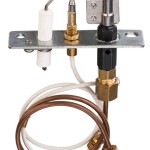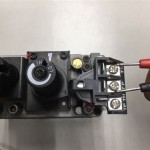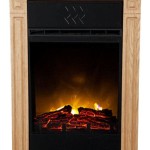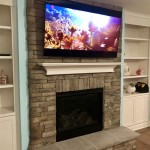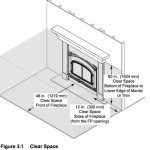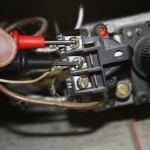Amish Fireless Fireplace: A Unique Heating System
The Amish community is renowned for its traditional way of life, which extends to their homes and heating systems. One such innovative and unique heating system is the Amish fireless fireplace, also known as a "heat-retention" or "heat-storage" fireplace. This unconventional fireplace design leverages the principles of heat retention to provide warmth and comfort throughout the day, even without a constant fire. This article delves into the intricacies of the Amish fireless fireplace, exploring its construction, operating principles, advantages, and disadvantages.
Construction and Design
Amish fireless fireplaces are typically constructed from heavy masonry materials like brick, stone, or concrete. The central element is a large, firebox, which is designed to hold a significant amount of wood or other fuel. Unlike conventional fireplaces, the firebox is enclosed within a thick, insulated chamber. This chamber is often constructed with multiple layers of brick, stone, or concrete, with air gaps strategically placed between each layer to enhance insulation. The insulation ensures that the heat generated by the fire is trapped inside the chamber, preventing significant heat loss to the surrounding environment.
The construction of the fireless fireplace is meticulously planned to maximize heat retention. In addition to the thick insulation, some designs incorporate features like a flue damper or a baffle system to control the flow of smoke and heat. The flue damper, when closed, prevents heat from escaping through the chimney while the fire is burning. The baffle system, consisting of strategically placed metal plates, deflects the heat and encourages it to circulate within the chamber, ensuring uniform heat distribution. These intricate design elements contribute to the fireplace's exceptional heat-storage capabilities.
Operating Principles
The Amish fireless fireplace operates based on the principle of heat retention. The fire is built in the firebox, and as it burns, the surrounding masonry absorbs the heat generated. The thick insulation layers within the chamber act as a barrier, trapping the heat inside. Once the fire has burned out, the hot masonry continues to radiate heat into the surrounding space for an extended period, typically for 12 to 24 hours or even longer. This gradual release of heat provides a consistent source of warmth throughout the day, even without a constant fire.
The operating principles of the Amish fireless fireplace are based on the physics of heat transfer and the thermal properties of materials. Masonry materials like brick, stone, and concrete have high heat capacities, meaning they can absorb and store significant amounts of heat energy. The insulation layers within the chamber minimize heat loss, ensuring that the absorbed heat is effectively retained. The slow, gradual release of this stored thermal energy is what provides extended warmth, even after the fire has extinguished.
Advantages of an Amish Fireless Fireplace
Amish fireless fireplaces offer several advantages, making them a popular choice for individuals seeking a unique and efficient heating solution.
The most significant advantage of this fireplace is its ability to provide long-lasting warmth without requiring constant attention. The fire only needs to be built once or twice a day, and the accumulated heat will provide warmth throughout the day and night. This makes it ideal for those who prefer a hands-off heating system.
The fireless fireplace is also highly efficient in terms of fuel consumption. The thick insulation minimizes heat loss, which translates to less fuel required to maintain a comfortable temperature indoors. This efficiency can result in significant savings on fuel costs, especially in areas with high energy prices.
Amish fireless fireplaces also have environmental benefits. The use of readily available and renewable energy sources like firewood reduces dependence on fossil fuels. The efficient heat retention minimizes energy waste, further contributing to a sustainable heating solution.
Disadvantages of an Amish Fireless Fireplace
While fireless fireplaces offer several advantages, they also come with a few disadvantages that potential users should consider.
One major disadvantage is the initial cost of construction. The use of heavy masonry materials and the need for skilled labor can make the installation process expensive. The cost of construction can vary depending on the size and complexity of the fireplace, and local material prices may also influence the overall cost.
Amish fireless fireplaces require a significant amount of space and require careful planning during the construction phase. The size of the fireplace and the surrounding insulation must be carefully considered to ensure adequate heat retention and even distribution throughout the home. This may not be feasible for individuals with limited space.
Maintaining a fireless fireplace can also be challenging for some individuals. Regular cleaning and maintenance are necessary to ensure efficient operation and to prevent fire hazards. The process of cleaning the firebox and chimney can be laborious and time-consuming.

Are Amish Fireplace Claims A Bunch Of Hot Air

Roll N Glow Tale Of An Amish Space Heater The New York Times

ᑕ❶ᑐ Amish Fireplace Heaters Why American Made Decor Is Important

How Miraculous Is The Amish Fireplace

Power Tower Roll N Glo Heat Surge

Kitchen And Residential Design Amish Space Heaters Really

Roll N Glow Tale Of An Amish Space Heater The New York Times

Heat Surge The Omish Made Fireplace

Power Tower Roll N Glo Heat Surge

Heat Surge Scheid S Enterprises Of Middlefield
Related Posts

